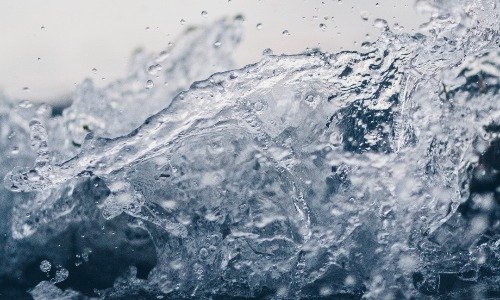Plastic water bottle waste is costing us and it is no joke. This past weekend at Costco I went to grab some laundry soap and noticed families loading up on the water bottles. It was right before the holiday weekend and chatter of what to get for the family BBQ was surrounding me. I could not help but feel a twinge of anger, sadness, and general outrage at the stacked cases of plastic water bottles sitting on the warehouse floor.
This post may contain affiliate links. If you click and make a purchase, we receive a small commission at no cost to you! For more information, read our full disclaimer.
Stop buying plastic disposable water bottles.
Stop it.
I am serious. This post will sound ranty, but for some reason we are still talking about plastic water bottles when it is fairly general knowledge that plastic is bad for the earth. Not only this, but buying disposable products like this expensive and something that can easily be cut out of the budget.
It is estimated that the average American spends about $266 a year on 167 disposable plastic water bottles. Think about how that could add up overtime! However, is an effect on our wallets beyond the money that we may throw at plastic water bottles on a busy 4th of July weekend. That is a direct correlation: do not buy water bottles, save money.
The indirect correlation is what plastic does to our planet and then our wallets. The problem is two-fold. The life cycle of the water bottle is one that uses more resources than we can afford. Before it even gets the floor of the Costco warehouse the water bottle has used up oil, heat sources and been packaged and transported. It is estimated that 17 million barrels of oil are used to meet the demand for water bottles world-wide. That is enough fuel for 100,000 cars.
One bottle of water take 3x the water to produce it.
After a water bottle is used, many of them end up in land fills or the oceans. I know, I know- you recycle. Great! However, only 27% of all disposable water bottles are recycled per year. This means the rest are leaching into our ecosystems.
This means hell for our planet and for our future generations, but also on you wallet. Prices for these things that we are using up and draining from the earth like oil are only rising and this is how it indirectly affects our money.
Check out the life cycle of the water bottle video below. It is truly shocking that we continue to use these in our society.
What Non Disposable Bottle is Best?
Ok. So you get it. Stop buying the plastic bottles. Say no when your kind massage therapist offers you one and recycle the ones you find laying on the street.
Yet, our solution is to then use NON disposable water bottles. We must also consider the impact creating one of these has on the earth and our wallets.
It still requires energy to creates the three options for non-disposable water bottles. There are pros and cons with each.
Plastic Non-Disposable:
Plastic is obviously still an option for non-disposable. It is also the cheaper option, but you get what you pay for.
It is still plastic and overtime will erode causing some leaching into your own drink. They tend to not last and will be thrown out due to a crack etc. Still contributing to the problem of plastic eroding our environment.
On top of this the plastic reusable bottles are made in relatively the same way as disposable ones, just built to be a bit more durable. Most plastics are derived from petroleum, a non renewable resource and the creation of a non disposable still has a heavy carbon foot print of approximately 96 grams of greenhouse gasses per 20 grams of plastic for the water bottle produced.
Glass Non Disposable:
Glass bottling produces similar carbon emission as low weight PET plastic bottles. There is a 33% recycling rate for glass, which is a huge improvement from the 27% of plastics mentioned above, but not great. In addition to this when recycled, 50% energy is used to recycle the glass than to make new glass. The good news is that glass is still 100% recyclable for the most part.
Glass has some other downsides including its fragility. It can be broken easily and is heavy making it the opposite of ideal for kids, travel etc. I do have a glass water bottle but it sits in my cupboard most of the time for this very reason.
Stainless Steel:
This is the best option for non-disposable water bottles if you stick with it. Let me explain why. The initial processing to create a bottle leaves a serious carbon footprint. Producing that 300-gram stainless steel bottle requires seven times as much fossil fuel and releases 14 times more greenhouse gases than a plastic bottle. YIKES!
Mining metal is expensive. However, if you use your Stainless Steel water bottle 500 times it becomes the best sustainable material in its life cycle assessment against glass and plastic. At $2 per bottle that is saving you $1,000 dollars minus the $20 you spend on the bottle itself.
In addition to this, the bottle will last forever. A process called passivation makes chromium unique in that when the surface is scratched, it rebuilds itself in the presence of oxygen, which makes stainless steel corrosion resistant, enabling long lasting life cycle. It is also 100% recyclable and because it lasts so long the recycle rate is 92%!

The Bottom Line:
- Using a non disposable water bottle instead of buying disposable ones will save you money.
- Using non disposable water bottles will lessen your contribution to the landfills and garbage patches
- Using plastic water bottles is still hazardous to your health and the environment with a low life cycle assessment.
- Using a glass bottle produces a similar carbon emission as plastic and requires more resources to recycle.
- Using Stainless Steel one time will not help the environment, and must be used at least 500 times in replacement of plastic bottles in order to be sustainable.
- Stainless steel bottles have the longest life span and are 100% recyclable with a high recycle rate in the US.(Although many still have plastic tops)
What we use:
We have two favorite stainless steel water bottles we use every single day and bring with us everywhere.We also have a large Klean Kanteen we keep with us for our furbabies or to fill our bottles on long trips. We are still looking for a better travel version of a stainless steel as we have two foldable plastic reusable bottles for backpacking and one bagging it.
No, we are not perfect, but we do refuse to buy the disposable plastic bottles and even when traveling we use our own bottles. If anyone has a recommendation for a travel stainless steel bottle drop us a link in the comments below!
Most resources were linked within the article. However for more stats go here.
For a calculator on water bottle consumption go here.
What is your favorite non disposable water bottle? Tell us in the comments.




1 comment
My sister bought me a stainless steel water bottle a number of Christmases ago and I love it. It’s my go to when it comes to camping or air travel so it’s gotten tossed around quite a lot but still works just the same as it did when I first got it.